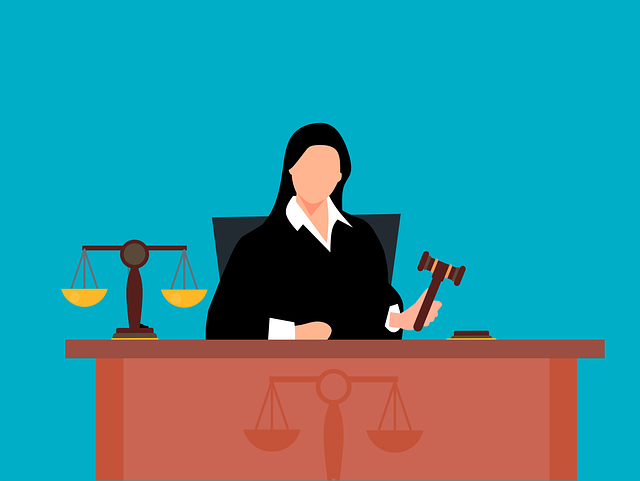Oregon's court system is meticulously designed for fairness and efficiency, with a clear hierarchy of courts handling diverse civil and criminal cases. Starting from small claims and district courts to circuit courts and the Oregon Supreme Court, each level ensures consistency and accessibility to justice. This structured framework enables Oregonians to navigate the legal process through proper filing, discovery, pretrial, and trial phases. Understanding key terms and procedures is crucial for citizens to effectively participate in this well-oiled legal system.
Dive into the intricate world of Oregon’s court procedures, where understanding the state’s unique legal landscape is paramount. This comprehensive guide explores the multifaceted aspects of Oregon’s judicial system, from its hierarchical structure down to the daily operations in the courtroom. We unravel the complex web of procedures, clarifying terms, and delineating roles for both plaintiffs and defendants. By the end, readers will possess a solid foundation in the legal process that governs Oregon, empowering them with knowledge previously reserved for legal insiders.
- Understanding Oregon's Court System: A Glimpse into State Courts
- Types of Courts in Oregon and Their Jurisdictions
- The Legal Process: From Filing to Trial
- Plaintiff vs Defendant: Roles and Responsibilities Explained
- Key Players in an Oregon Courtroom: Judges, Lawyers, and Staff
- Common Legal Terms and Procedures Every Citizen Should Know
Understanding Oregon's Court System: A Glimpse into State Courts

Oregon’s court system, like many states’, is structured to ensure a fair and efficient legal process for all. At its foundation lies a hierarchy of courts, each with distinct roles and responsibilities. The state courts are divided into several levels, beginning with small claims and district courts, which handle a wide range of civil and criminal cases. Higher up the ladder are circuit courts, specializing in more complex matters and appeals from lower courts.
The Oregon Supreme Court, the pinnacle of the state’s judiciary, serves as the final arbiter, reviewing cases and ensuring the consistency and fairness of legal processes across the state. This intricate system is designed to provide access to justice for residents, offering a structured framework for resolving disputes through a transparent and well-defined legal process in Oregon.
Types of Courts in Oregon and Their Jurisdictions

In Oregon, the court system is structured to ensure a fair and efficient legal process for all residents. The state is home to various types of courts, each with its own jurisdiction and responsibilities. At the top of the hierarchy are the Supreme Court and the Court of Appeals, which handle complex cases and interpret state laws. Below these are the district courts, which deal with a wide range of civil and criminal matters, including felonies, misdemeanors, and traffic infractions.
Additionally, Oregon has circuit courts that oversee specific areas, such as family law, juvenile delinquency, and small claims. The county courts further specialize in handling cases related to probate, guardianship, and certain types of civil disputes. This multi-tiered system ensures that citizens have access to appropriate legal venues for resolving their issues, with each court level equipped to handle matters within its jurisdiction as part of the broader legal process in Oregon.
The Legal Process: From Filing to Trial

In Oregon, the legal process begins with filing a claim at the appropriate court. This can be done online or in person, depending on the type and complexity of the case. Once filed, the plaintiff receives a summons and complaint, which formally notifies the defendant of the lawsuit. The defendant then has a set period to respond, either by filing an answer or other defensive pleading.
During this initial phase, both parties exchange discovery materials—documents, depositions, and other evidence relevant to the case. This back-and-forth continues until the pretrial conference, where a judge reviews the case and sets parameters for the upcoming trial. If a settlement is not reached during these procedures, the case will proceed to trial, where a jury or judge will ultimately decide the outcome based on the presented evidence and arguments.
Plaintiff vs Defendant: Roles and Responsibilities Explained

In the legal process of Oregon, a case typically involves two key parties: the plaintiff and the defendant. The plaintiff is the individual or entity that files the lawsuit, initiating the legal action against the defendant. They are seeking a remedy for an alleged harm or injustice. On the other hand, the defendant is the person or organization being sued, who must respond to the allegations made by the plaintiff.
The roles and responsibilities of these two parties are distinct. The plaintiff must present a clear and compelling case, providing evidence and legal arguments to support their claim. They must ensure proper service of process, ensuring the defendant receives notice of the lawsuit. In contrast, the defendant has the opportunity to respond, denying the allegations or raising defenses. They may also counterclaim against the plaintiff if they have separate legal grievances. This dynamic ensures a fair legal process in Oregon, allowing both parties to present their cases and seek justice within the court system.
Key Players in an Oregon Courtroom: Judges, Lawyers, and Staff

In any Oregon courtroom, several key players are integral to the smooth functioning of the legal process. At the forefront is the judge, who presides over the court and ensures fairness during trials. Judges in Oregon have a significant role in interpreting laws and making critical decisions that can impact cases. They maintain order, manage proceedings, and ultimately render judgments based on the evidence presented by both parties.
Lawyers, another essential component of the legal process in Oregon, play a pivotal role in representing clients and advocating for their interests. These legal professionals prepare case strategies, conduct research, file documents, and communicate with witnesses. They are responsible for presenting arguments, examining witnesses, and ensuring their clients’ rights are protected throughout the legal process. Additionally, court staff, including clerks and bailiffs, contribute to the efficient administration of justice by managing court records, scheduling hearings, and maintaining order in the courtroom.
Common Legal Terms and Procedures Every Citizen Should Know

In Oregon, understanding common legal terms and procedures is essential for any citizen, as it empowers individuals to navigate the state’s court system effectively. Key concepts like subpoena, a legal document compelling attendance or testimony, play a crucial role in the legal process Oregon follows. Similarly, petition, a formal request made to a court, initiates various legal actions. Knowing these terms allows citizens to recognize when they might be involved in legal matters and take appropriate steps.
Procedural steps such as summons (notifying a party of a lawsuit) and complaint (the initial pleading outlining the case) are foundational to Oregon’s court procedures. Citizens should also be familiar with discovery, the process of exchanging information between parties, and trial, where both sides present their cases. This basic knowledge enables individuals to better understand their rights and obligations in legal matters, ensuring active participation in Oregon’s judicial system.






